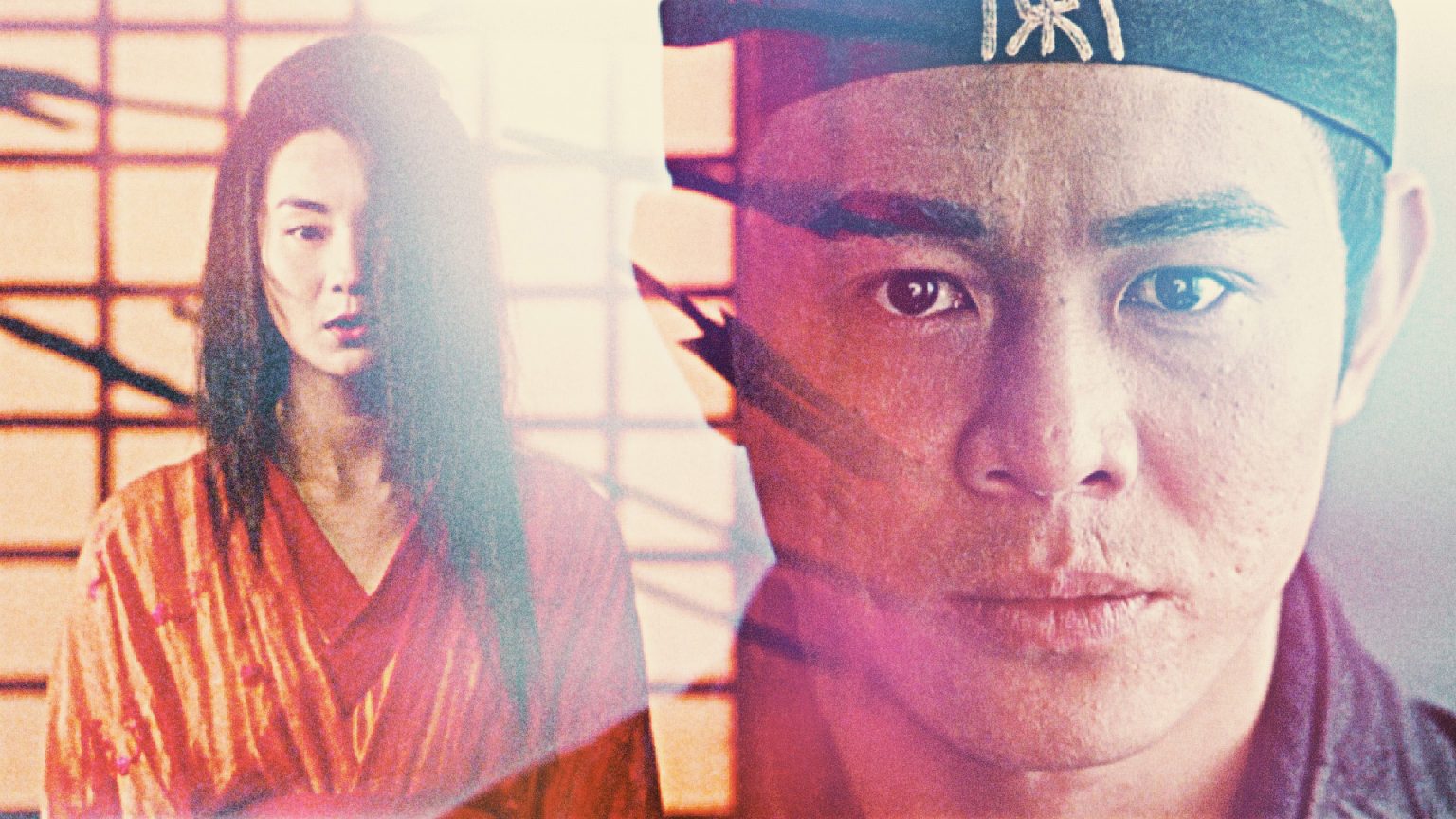Zhang Yimou has always had a thing for color. From the image of a crimson caravan bobbing through a field of grass in Red Sorghum to shots of sunbeams slicing past billowing orange sheets in Ju Dou, the Chinese director has gone around the color wheel. But even Zhang himself has rarely matched the use of color in Hero, his 2002 wuxia epic, in which masterful choreography only adds to the visual splendor.
In Hero, which was shot by legendary cinematographer, and Wong Kar-wai collaborator, Christopher Doyle, color demarcates the sections of a Rashomon-style narrative — the film depicts various versions of a nameless warrior’s vanquishing of the Qin Dynasty’s most powerful opponents. The color-coding is not subtle, either, as in one of the film’s most vivid moments, when a dance-like duel among swirling autumn leaves ends in a fatal wound. To signal this, Yimou slowly saturates the image in a deep shade of red, as if the film itself were bleeding. Later in the film, in a shot of two characters sprinting beneath a powder-blue sky while mountains loom like glaciers in the background, an initial “angry rouge” gives way to arctic tones.
However, color is just one of the many ways by which the film expresses its ethos. In this sense, the effect derived from Hero isn’t limited to the film’s exaggerated visuals but extends to the richness of its plot. The film is filled with knight-errantry, heroic bloodshed, and another mythic iconography that is thrilling because it is both different and familiar; it is at once a sublime departure from reality and an earnest interpretation of a nation’s beloved stories and cultural traditions.
Central to the film’s quixotism are Zhang’s set pieces, which both emulate and exceed the conventions of stylized action in past wuxia cinema. Wuxia, the iconic Chinese genre featuring wandering warriors, intricate wordplay, and daring adventure, reached the big screen in the early twentieth century. But the genre only took off under the Shaw Brothers Studio, which worked with directors like Chang Cheh (The One-Armed Swordsman) and King Hu (Come Drink With Me, A Touch of Zen) to produce fantastical period pictures marked by elaborate wirework, which enabled actors to fly across rooftops and somersault mid-combat. This acrobatic defiance of gravity hit peak spectacle in the 1990s with films like Tsui Hark’s Once Upon a Time in China and Yuen Woo-ping’s Iron-Monkey. The style gained even more traction at the turn of the century with Ang Lee’s Crouching Tiger, Hidden Dragon, which, for many, marked a high point for wuxia cinema and the action genre in general.
Two years after Crouching Tiger, Hero vaulted over the high bar set by Lee’s film by marrying the wuxia genre with digital filmmaking. By incorporating both live-action filmmaking and CGI, Yimou takes advantage of the former’s sense of weight and consequence, while using the malleability of the latter to conjure digital sequences that put most blockbusters then and since to shame.
In one scene, martial arts veterans Jet Li and Donnie Yen face off in a rematch, ten years after they traded blows in Tsui’s Once Upon a Time in China II. Even though this stretch of thrilling action is adorned with slow motion, expressionistic lighting, and wirework, it is decidedly old-fashioned — its stylized quality largely comes from the flawless choreography and athleticism of two masters in peak form. A couple of scenes later, however, we have a moment where Li’s character and Maggie Cheung’s Flying Snow throw themselves into a fusillade of arrows so massive that it darkens the sky. Rather than being shredded to oblivion, the two fighters parry the arrows as if they’re twigs — Li’s warrior uses his sword as a whip-fast arrow-swatter, and the phoenix-like Snow sweeps the skies clean with the folds of her flame-colored robe. Unlike Li and Yen’s faceoff, this stretch of superhuman action (exhilarating in its own way) is shot with the logic of CGI. It is between the stylistic poles of these two scenes that the rest of Hero falls.
Even in moments that are less digitally doctored, Hero maintains an overwhelming sense of gorgeous artifice — as if every frame and pixel were perfectly placed, rendering a world of breathless beauty. It is fitting that the plot of Hero revolves around the act of storytelling, and that one of the central objects in the film is the calligraphy brush, which sits at the intersection of writing and painting. Zhang’s film is, on some level, about its own making, about showing off the love and care that went into its construction. It wears its heart on its sleeve and touches ours in the process.
Watch Now: Stream a host of wuxia films like Master of the Flying Guillotine, Saviour of the Soul, or Zen of Sword here on Fandor.




